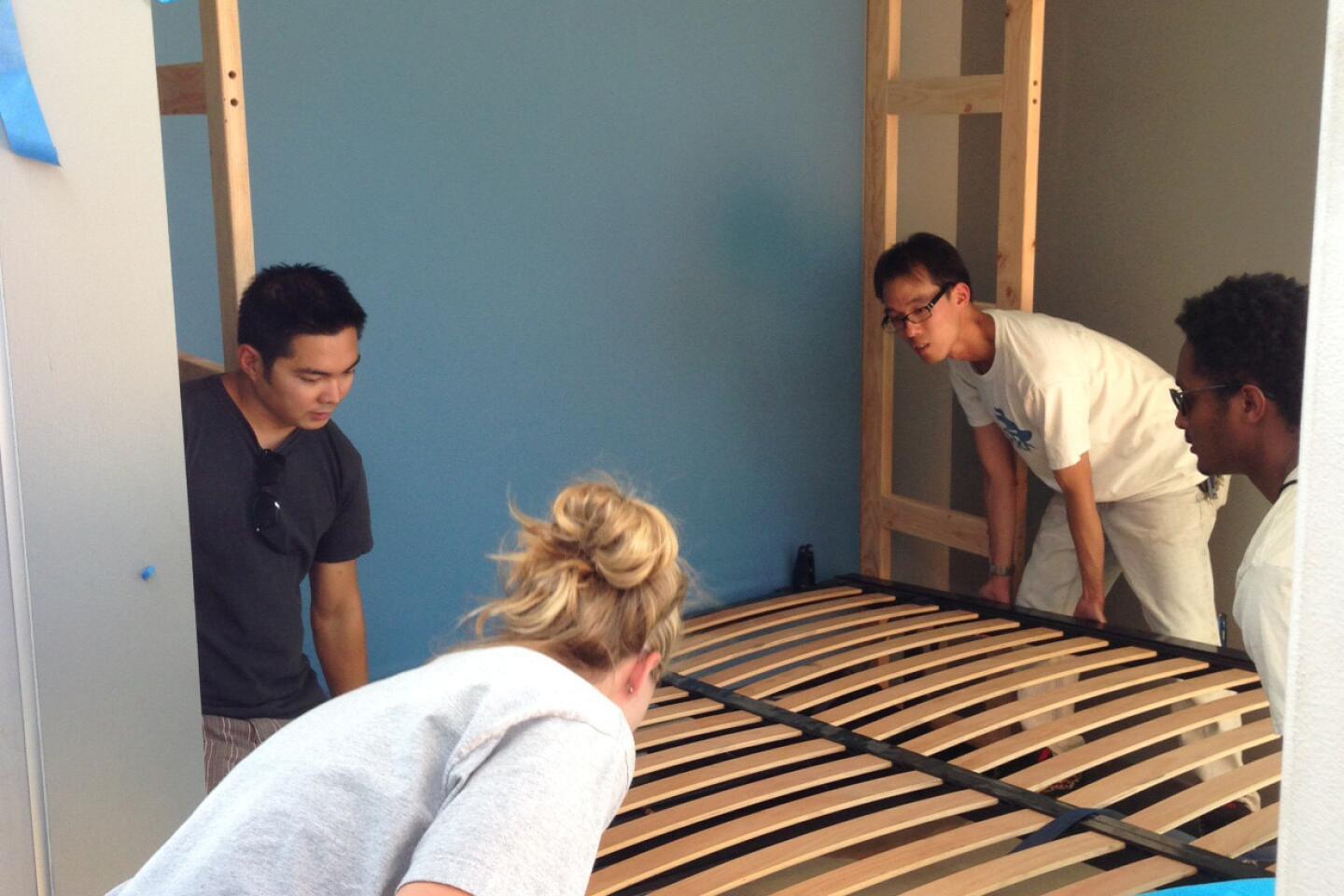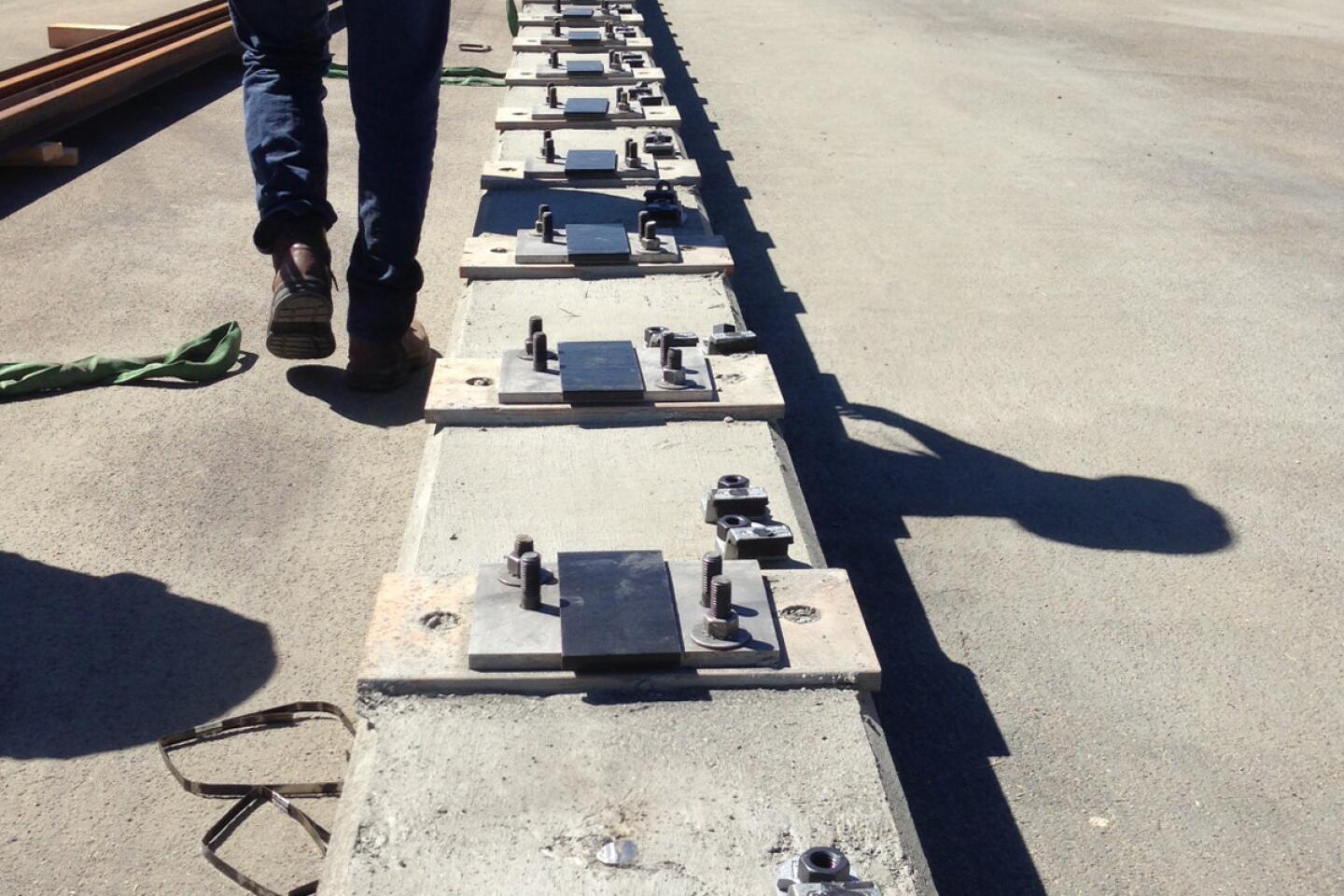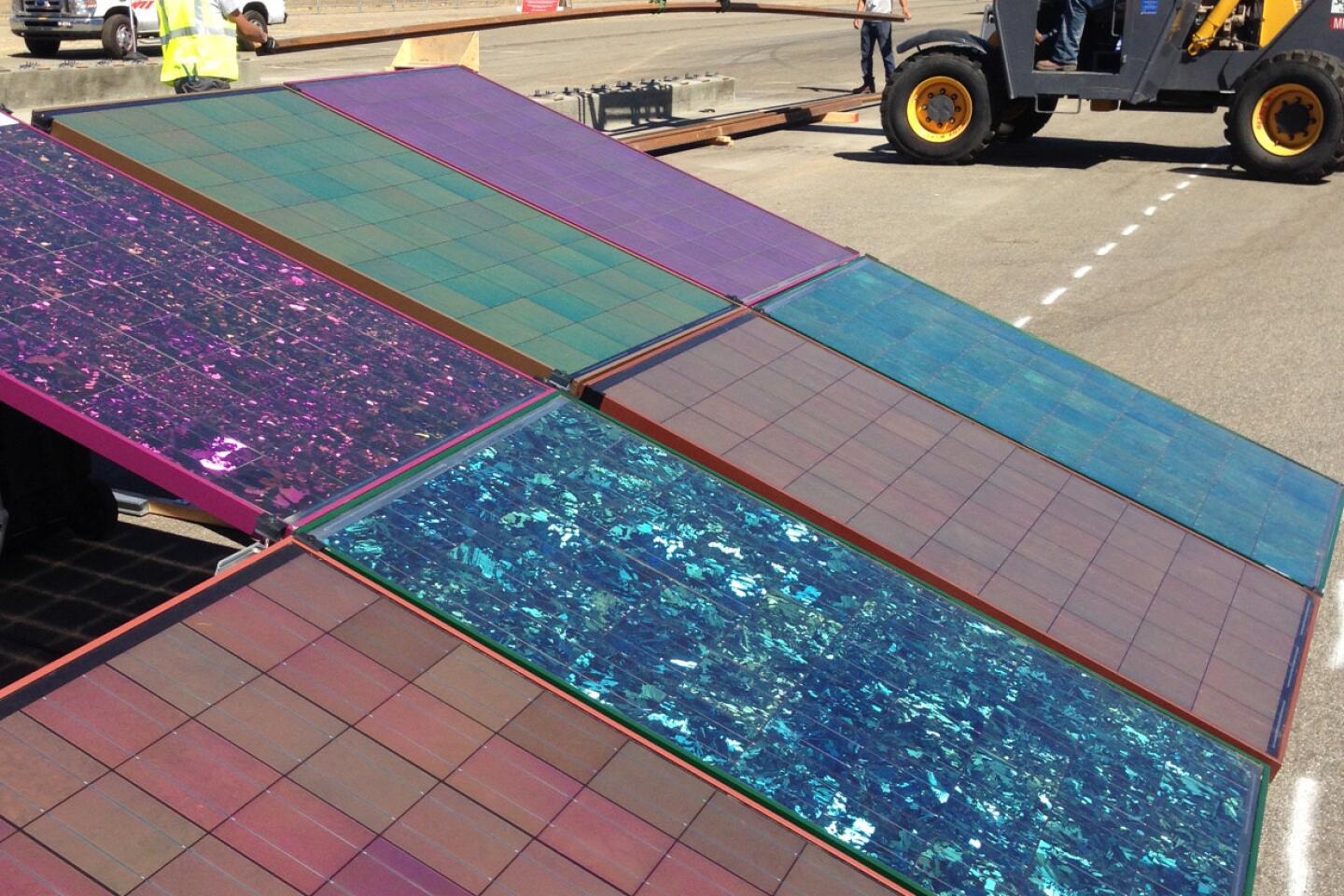SCI-Arc/Caltech Solar Decathlon house on the move, down the 405
- Share via
The 2013 Solar Decathlon shifted into high gear at the Great Park in Orange County on Thursday, and while most of the 20 teams were accelerating efforts to finish their eco-friendly house of the future in the next six days, the combined Southern California Institute of Architecture and Caltech house hit an unexpected detour.
Their novel design -- twin modules set on tracks, so the house literally splits in half and opens up to the outdoors in good weather -- was still navigating Southern California traffic to reach the competition site. Flatbed trucks carrying the team’s entry were diverted from Interstate 5 because the loads were too heavy, team member Nicole Violani said. Instead, the 10-by-33-foot modules were being driven from the SCI-Arc campus in downtown Los Angeles to the Great Park via the 5, 605 and 405 freeways, she said.
If all goes as planned, the modules will be craned into place Thursday afternoon and attached to steel tracks on a concrete footing that the team poured earlier in the week.
Violani led a walk-through and demonstration of her team’s house, the Dynamic Augmented Living Environment, or DALE, at SCI-Arc on Monday. The concept, she said, is based on the common homeowner desire for flexible spaces — for indoor and outdoor rooms that can change to meet evolving wants and needs.
The track system, engineered by Caltech students, takes components normally used in gantry cranes and repurposes them to shift the position of the house modules. In good weather, the units can slide apart, creating what the team calls the “midyard,” an outdoor lounge between the indoor living spaces. In bad weather, the modules can slide back together, sealed in the middle with a giant rubber gasket, to create a more conventional, fully enclosed home.
FULL COVERAGE: Solar Decathlon 2013
The whole system is powered by two motors, equipped with flanges that keep the modules from falling off the rails and outfitted with sensors to prevent objects (wandering dog, rogue chair or inattentive human, perhaps) from getting crushed between modules in motion.
Under the shifting rooms will sit DALE’s landscaping: decking as well as shallow trays filled with decomposed granite, water (call it a reflecting pool) or turf (though standing out in the baking Irvine sun on Tuesday, onlookers openly wondered if the sod would live to see the Oct. 3 public opening of the houses).
Inside DALE, one module holds the kitchen and bathroom. The second module is bookended with Murphy beds -- a queen on side, twin bunks on the other. To carry the flexible-space theme further, the team designed cabinetry suspended from recessed tracks in the ceiling. At night, the cabinets slide to middle of the module and act as room dividers between bedrooms; during the day, the Murphy beds flip up and the cabinets can slide to the walls, leaving the central part of module open as additional living space.
Photovoltaic panels will be fixed at a 15-degree angle to maximize solar collection, Violani said, and will be installed on mobile racks. When DALE is configured as a single enclosed unit, the solar panels act as awnings. When the modules shift apart, the panels can slide over the midyard and shade the deck or lawn.
As in all the Solar Decathlon entries, the photovoltaic panels on the SCI-Arc/Caltech house will generate enough electricity to power the house, including the track motors. A representative from one of the team’s sponsors also said DALE was the first wholly solar-powered build in Solar Decathlon history: Power of Green Los Angeles said its portable solar generators are using Colored Solar panels to power all the equipment used to assemble the house. Stanford has a similar arrangement with Sol Solutions.
All of this is a long way from a year and a half ago, when the team first voted on which design it would pursue for the 2013 competition. The other finalist was a refined version of the SCI-Arc/Caltech 2011 entry, an inflatable house. The moving module concept won by a single vote, Violani said.
Details of public access to the finished designs and a sneak peek at eight of the Solar Decathlon entries can be found in our earlier article. When DALE does open to the public, Violani said, a digital counter will show how long before the house will shift positions, giving visitors a chance to see it in motion and experience its rooms in different configurations.
Stay tuned for more team profiles: Stanford, Middlebury and Team Capitol DC (Catholic University of America, George Washington University and American University), you’ll be up soon. We’ll also have student-written updates from other teams, including USC. Follow our coverage via Twitter and check back to see updates to our main Solar Decathlon index during the run of the event.
@cnakano | craig.nakano@latimes.com
Clarification: This post was revised Oct. 1 to clarify Power of Green Los Angeles’ role in the project and to acknowledge that Stanford also is using portable solar generators to power its construction.
JOIN THE CONVERSATION:@latimeshome | pinterest.com/latimeshome | facebook.com/latimeshome | facebook.com/latimesgarden
More to Read
Inside the business of entertainment
The Wide Shot brings you news, analysis and insights on everything from streaming wars to production — and what it all means for the future.
You may occasionally receive promotional content from the Los Angeles Times.
















